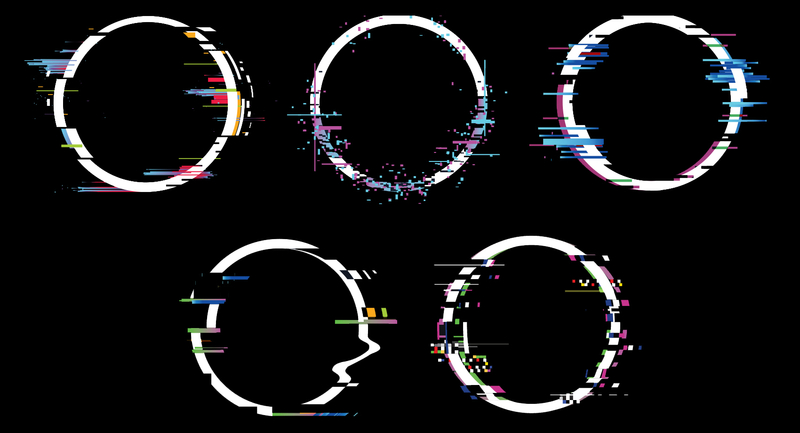"Hey Dana, I'm sending you an article that we should talk about," my teaching partner (and coauthor) Tom announced from his side of our shared classroom. Like many colleagues, we do this sometimes—share articles with one another about new ideas that might improve our practice. As full-time middle school teachers who first met in graduate school, reading education research is not a foreign or uncomfortable concept to us. This particular NPR piece about research on note-taking resonated with us both.
The article, "Attention, Students: Put Your Laptops Away," reported results of a 2014 study by researchers Pam Mueller and Daniel Oppenheimer, "The Pen Is Mightier Than the Keyboard: Advantages of Longhand Over Laptop Note-Taking." Both of these titles piqued our interest because of the work we were doing with the 7th graders in our English and social studies classes. One collaborative project our classes work on together throughout the school year involves significant computer-based note-taking from online research. Part of our ongoing frustration with this project, however, is that many of our 7th graders simply copy and paste whole chunks of text into their research organizers. Rather than scanning for keywords and then closely reading the text for understanding, they quickly pass over the text and, thinking it might be important, copy big portions of what they have merely skimmed. These passages too often end up in their final papers without being paraphrased or cited. Motivated by what we read in the NPR article, particularly that students taking longhand notes performed better on tests of the material, we decided to look at the issue of computer-based note-taking more closely.
As we read and discussed the original research, we saw several points in which the context of the study and our own teaching context differed. The study was based on college students watching TED Talks while taking notes either on a laptop or longhand. Then they were tested on the knowledge of what they had just seen. The results indicated that students who had taken longhand notes on paper scored betterthan those who had typed notes on their computers. According to the researchers, having to write notes by hand requires students to be more selective about what they are recording. Because students can type faster than they can write, computer notes tend to be more verbatim or non-generative, while handwritten notes require more cognitive processing, such as summarizing, connecting, and paraphrasing.
In our project, students would be writing their own research questions about a historical figure and then finding evidence from online resources to help them answer those questions. Rather than taking a test, they would be required to use that evidence and analyze it in a written essay. That analysis is crucial: students have to explain the connection of the evidence they are using to the claim or the thesis of their essay. Analysis, even for 7th graders, is what turns a report into an essay that demonstrates comprehension, application, synthesis, and evaluation of evidence. In this way, we saw connections to two of the most important functions of note-taking: storageand encoding (Mueller & Oppenheimer, 2014). In our students' research and writing, they were employing both of those functions—the use of storage for the factual evidence they took notes on and the use of encoding for their analysis of that evidence.
In Mueller and Oppenheimer's study, online note-taking yielded more notes by volume, but these notes were often taken indiscriminately from the source. But longhand note-taking was connected with higher levels of processing or encoding. The researchers thus concluded that longhand note-taking was more beneficial for student learning. We wondered: Could we determine the efficacy of one method of note-taking over the other for our students in their work?
Enter Action Research
To answer that question, we began to design our own action research project to conduct with our students. Action research, in general, is a methodical process of inquiry conducted both by and for those interested in a specific question. In our case, that question was about the efficacy of different forms of note-taking. In a classroom setting, action research is tailored by the teachers involved to improve and refine instruction. According to Creswell, it starts with a practical focus and the teacher-researcher's own practices, not an experimental, untried method (2012). In keeping with that approach, we took methods we already had in place and collaboratively designed a process to compare them. We wrote out our plan of action and reflected on it throughout the project. Action research also involves sharing results—whether localized or with a larger audience.
We formally started our process of inquiry with a research question: What difference will there be in the content scores between students who take longhand notes and students who type notes using Google Docs?
We planned to do the study in January, which is 18 weeks into the school year, the equivalent of a semester. We had already established research and writing protocols with our students, including ones for evaluating research information and close and critical reading of texts. We had also spent time working on the development of well-structured paragraphs using the CEAL protocol (claim, evidence, analysis, and link or "leaving thought"). In previous research projects, we had worked with our students to write strong thesis statements and related research questions. By January, our middle school students had also written a minimum of three complete essays with introductions, CEAL body paragraphs, and conclusions. Therefore, we were confident that our students had a foundation of skills that would help them be successful with the essay we assigned for the study, whether they took notes on a computer or paper.
As the time approached, we divided the students randomly into two groups: one for typing notes and the other for longhand notes. We informed our 7th graders of the change in our project by using the following script:
For this project, we are doing an experiment! So, as you are researching, you are going to be participating in our research project. Using a randomizer, we have created two equal groups. One of the groups will be researching online and taking notes as we have done on the other projects, by typing on a computer. The other group will also be researching online but taking notes with a pen or pencil on paper. We are trying to see if there is any difference between the two methods of taking notes. Both groups will still type their [final] essays like we've done before.
Both groups had the same teacher-provided graphic organizer for recording their notes, except that the computer-based version was shared through Google Classroom and the longhand version was printed out on paper with ample space for students to write notes. All students used online resources and worked in our school library's computer lab, where we customarily conduct our research projects. Both of us circulated as usual and helped students throughout the week.
When their notes were completed, the students used computers to type their essays. We had help scoring the essays from a group of University of Montana college students who were enrolled in a writing methods class (taught by Dana). Each college student scored a random set of about five essays as a class assignment on assessing writing. Neither we nor the college students knew whether the papers were written from longhand or digital notes. Also, the college students did not know the nature of the study we were conducting, nor did they have access to students' names.
Although the whole rubric was utilized for a grade, we only compiled and analyzed the content score for the purposes of the study. This content score encompassed both evidence and analysis; that is, both information from the students' sources and their explanations of how that information connected to their claims and thesis statements.
The Surprising Results
So, what did we discover from the 85 students who took part in this experiment? According to the results from the college students, the 7th graders who wrote longhand notes averaged a 2.55 in their content scores, and the students who typed notes on the computer averaged a 2.82, a difference of 0.27 or 11 percent. Our content scores were similar: 7th graders who wrote longhand notes averaged a 2.30 and their peers who typed notes averaged 2.73, a difference of 0.43 or 19 percent.
In direct contrast to Mueller and Oppenheimer's results, the students in our classrooms who typed their notes had stronger scores. During our study, both groups of students were found to have recorded a large swath of their notes verbatim from their sources, so this is not strictly a problem related to digital note-taking—it was one we would need to address more broadly. And because our 7th grade "typers" scored better on their essays, we felt strongly that it made sense to continue to allow all students to use computers for note-taking. As we entered quarantine teaching shortly after we compiled our results, it was reassuring to know that typing notes wasn't going to hinder our students' understanding of complex texts.
Our decision was backed up by a more recent study that replicated and extended the work of Mueller and Oppenheimer. This research, which also tested college students who watched TED Talks, indicated that "the available evidence does not provide a definitive answer to th[e] question" of whether students should take notes on a computer or on paper (Morehead, Dunlosky, & Rawson, 2019). With no clear winner, this result supported what we had come to believe: it was fine for our students to take notes on a computer after all.
Rooted in Reality
One defining aspect of our study was that the situation was not artificial or lab-based. Our classroom research utilized learning materials and methodologies that are part of what we do on a daily basis. These are typical 12- and 13-year-old students who were required to do research and write an essay, not college students who volunteered to be part of a study.
Such action research, by its nature, can be messy and have variables that we cannot control, such as fire drills, student absences, and differing skill levels. Messiness was a part of the study just like it's a part of classroom reality. For that reason, we have a high degree of confidence that our evidence is sound and applicable to our teaching situation and might even be applicable in similar teaching situations.
Despite our results, however, we still needed to remedy the tendency of our students to copy and paste large amounts of text without citation or paraphrasing. Our hope was that handwriting notes would lessen, if not eliminate, this tendency. It did not. Even when students were handwriting notes, they were copying much of the text word for word. As a result, we provided more instruction on paraphrasing and in-text citations in our respective classes. And we sharpened our focus on undoing this copy and paste tendency via our CEAL writing protocol. This was part of the dynamic and reflective process of action research.
No doubt other pieces of education research will come to our attention as we continue our work. When they do, we will look at them critically, with an eye on application to our specific teaching context. Thoughtfully examining our teaching practices in light of new research will always result in better informed decision making for the students we teach.








